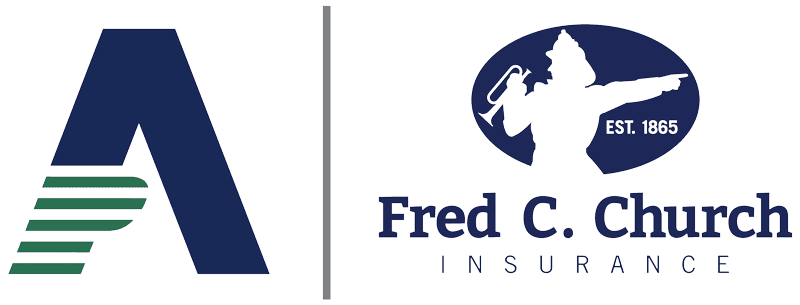On October 1, 2021, the Massachusetts Department of Family and Medical Leave (DFML) released its annual report, as required under the Massachusetts Paid Family and Medical Leave Act (the Act).
Although the report provides a number of different statistics on the use of paid family and medical leave (PFML) under the Act, the report is not a reliable predictor of future leave activity, since the effective date for broader forms of family leave (other than birth and bonding) did not take effect until July 1, 2021, and consequently were not captured in the January 1 to June 30, 2021, data in the report.
While a true comprehensive comparison is not possible until the entire law has been effective for at least two calendar years, there are some interesting takeaways.
1. No Rubber Stamp: The State Is Denied Approximately 23% of All Applications
The report’s data suggest that the state program is not a rubber stamp for all who seek paid leave under the state program. Of all applications submitted to the DFML, 22.99% were denied (a total of 9,989 applications).
Inadequate documentation and employee ineligibility were the two most popular reasons for denial. In the first six months of the program (FY 2021), the DFML approved 43,440 applications; 58.13% of these applications were for medical leave (25,252 applications).
Of the applications that were initially denied, 3,207 were subsequently approved during the appeals process and were counted toward the 43,440 total approved applications.
The family leave applications were understandably lower, since birth and bonding leave was only effective for the first half of 2021. To that end, family leave to bond with a child following birth, adoption, or foster care placement accounted for 41.81% of applications (18,165 applications).
Notwithstanding the 22.99% application denial rate, for the first six months of 2021, the DFML paid out a total of $167,915,781 in family and medical leave benefits. Broken down, that’s $92,047,826 for medical leave benefits and $75,867,954 for family leave benefits.
2. Younger, Presumably Healthier Workers Are Submitting More Leave Applications Compared to Their Older Counterparts
The age of applicants for paid leave skewed considerably younger rather than older.
The largest share of applicants were individuals in their 30s, almost twice as many as in any other decade of life. The second-largest share were individuals in their 20s. The total number of applicants from age 10 to 39 was approximately twice as many as for those in the 40 to 70-plus age range.
Albeit speculative in nature, this may be a demographic product of the employees of smaller employers (those with 25 or fewer employees), since there is a greater likelihood that a smaller employer will enroll in the state program as it is excused from any employer contributions.
Unfortunately, the DFML’s published data does not break out leave by employer size. Finally, more than twice as many women applied for PFML benefits compared to men, which may be attributable to the availability of birth and bonding leave effective January 1, 2021. It will be interesting to see if that gender gap lessens in the future, since broader forms of family leave became available on July 1, 2021.
3. White-Collar Occupations Lead Blue-Collar Occupations in Collecting Paid Leave
The top 10 occupation sectors (by the number of claims) who received paid leave benefits were:
- Office employees and administrative support
- Management
- Healthcare practitioners
- Sales and related occupations
- Healthcare support
- Transportation and material moving
- Production
- Food preparation and serving
- Business and financial
- Educational instruction and library
What is unknown is what impact, if any, the pandemic had on the claim incidence for healthcare practitioners and healthcare support employees, and whether their frequency of claims will decline in future years as the pandemic hopefully recedes.
Additionally, to what extent, if any, did the availability of paid leave to employees under the federal Families First Coronavirus Response Act or the Massachusetts Emergency COVID-19 Paid Leave (as of March 1, 2021) depress PFML claim submission for employees?
4. On Average, a Typical Employee PFML Leave Will Last at Least 10 Weeks.
The report provided the following information on PFML leave duration:
“Assuming a five-day work week, the average duration of a leave completed in 2021 was 53 days from start to finish, or 10.7 weeks. For medical leave, the average duration of a leave completed in 2021 (assuming a five-day work week), was 57 days or 11.44 weeks. For family leave, the average duration of a leave completed in 2021 (assuming a five-day workweek) was 51.5 days or 10.3 weeks.”
The average length of PFML claim duration underscores the importance that employers review their internal leave programs and understand what leave programs their employees qualify for. Otherwise, an employer could be left with an employee looking to stack 12 weeks of unpaid job-protected FMLA leave following 10 weeks of job-protected PFML.
5. What Impact Will PFML Have on Short-Term Disability Insurance Needs?
Contemporaneous with the release of the DFML’s report, the DFML announced that for 2022, it was reducing employer rate contributions to the state program.
On the surface, this may excite an employer to jettison a fully insured STD product and jump into the state program if the state rate is more financially attractive than what the STD marketplace is offering. Caution should be exercised, however, before any such move, because unless the employer has enjoyed a private plan exemption for two years, it would be exposing itself to owing the state upwards of four quarters of retroactive state contributions as a price to enter the state program. Additionally, given that the state announced the 2022 contribution rate decrease without the advantage of any 2021 family leave claims (i.e., spouse, child, parent, in-law) beyond birth, bonding, and placement for adoption of a newborn, there is a reason for skepticism as to how reliable the state’s analysis was that drove the new 2022 employer rate contribution.
6. Request for More Information: DFML Should Disclose More Data for the Public Good
The DFML’s report was precisely limited in content to the extent reporting was specifically required under Chapter 175M(7)(e). Hopefully, the DFML will consider taking the initiative to disclose more information in future reports that can better inform Massachusetts employers, as well as the insurance industry, which has undertaken to insure PFML risk as an option to an employer enrolling in the state program.
It is difficult to comprehend how the DFML concluded that a six-and-a-half-page report, of which at least half is dominated by graphs, does justice to a new employer leave law where the state paid $167,915,781 in claims for just the first six months of 2021.
More information would be helpful to an employer trying to better assess the risk and costs of remaining in the state PFML program versus seeking a private plan exemption.
To that end, the issue of ease of program administration with the state is ripe for further analysis, and, hopefully, future reports will provide data on:
- How many employers applied for private plan exemptions.
- How many were approved.
- How many fully insured exemptions were approved versus self-funded.
- How many exemptions were only for family leave versus exemptions only for medical leave.
- How many employers sought reimbursement from the DFML for paid leave.
- How long the state took to reimburse employers.
- Greater detail on the incidence of leave applications broken down by employer size.



